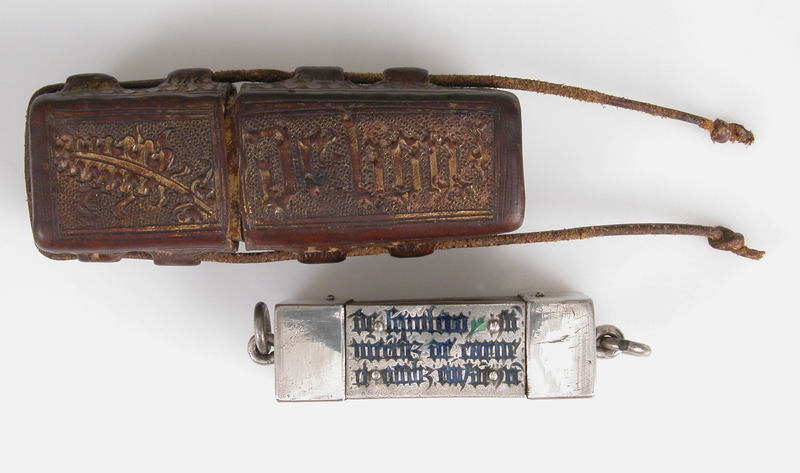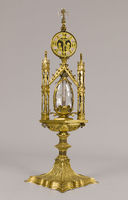Reliquaries
In medieval Christianity, relics and the reliquaries they were housed in play an important role. Objects known as relics, often body parts claimed to be belonging to a revered saint, or an object associated with them in their lifetime, were precious and possessed spiritual power. These items were collected by those of power in the church and were put on display and used within liturgy in various ways. The reliquaries provided a means of protection for the relic and allowed for such pieces to be moved around in a simple way. Many reliquaries are adorned with precious gems and metals, meant to convey the vast importance of the holy objects they contain. Reliquaries could take many forms, and some of the most prominent were displayed on altars for use during liturgy. Others, however, became personal relics as the prominence of the cult of saints grew and more and more people wanted access to a saint. These personal relics and reliquaries were portable and much less elaborate and expensive than reliquaries housed at shrines and cathedrals. Instead they were small and focused on providing a human accessibility for common people. This Portable Reliquary case is a perfect example of the ways in which someone might carry a reliquary with them. This case would have been carried directly on one's person for easy access. It has a plaque describing it as from the tomb of Saint Vincent, with the flesh and bones from the same place. The relic and reliquary contained within this case was important enough to carry around daily, and the power it was believed to hold was valued enough that it had to be.
The reliquaries which contained relics were necessary for a variety of reasons. As the cult of saints and veneration of them grew, relics attracted more attention and needed to be protected. The earliest reliquaries, lacking any sort of elaborate ornamentation, protected sacred relics from movement and touch that might damage them. Additionally, the reliquary works as a signal to its audience that a relic is legitimate. The care and work put into a reliquary that would be viewed at a shrine of importance is extremely deliberate and immediately recognizable. The art of the reliquary commands a certain respect and response from those viewing it.
Reliquaries were often used within church gatherings, such as on a given saint’s feast day, where they would be carried in procession, or integrated into an altar. Within the culture of the middle ages and the prominence of the cult of saints, reliquaries were elevated to a status above man. They were venerated and sought after by competing cathedrals, and masses of people would conduct pilgrimages for the chance to visit them. Their importance was central to Christian faith and practice and cannot be overstated.

